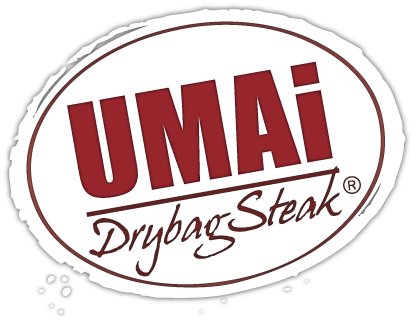Myths and facts about Dry Aging Beef at Home:
Myth 1: You can dry age individual steaks by putting them on a plate in the refrigerator wrapped in paper towel for one to four days.
I once saw a post done by a well known kitchen authority that demonstrated an individual steak being wrapped and left in a refrigerator for a couple of days to receive the honor of being called “DRY AGED STEAK”.
Well…This is like leaving a glass of grape juice on a kitchen counter for a couple of days and then calling it wine. In order to be called DRY AGED, a piece of beef needs to be aged for at least two weeks. In addition aging an individual steak is just like baking a slice of bread. When you take this slice out of the oven it will be mostly crust. One should never age individual steaks because during aging a crust is formed that then needs to be removed prior to cutting it into delicious Ribeyes or New York strips.
Myth 2: Dry Aging can only be done in humidity controlled environment.
A Wet Aged Steak is basically 75% water. When you start dry aging the meat will begin to evaporate moisture. This evaporation rate is the highest in the beginning of the process and diminishes as the meat forms a crust of protein on the surface. After a two week period the crust reduces evaporation to a trickle regardless of the outside humidity.
Myth 3: DRY AGING can only be done in open air. For centuries meat has been dry aged in burlap sacks, cheese cloth and other moisture permeable materials. This was done in order to reduce contamination during aging by insects, rodents, etc.
Any moisture and oxygen permeable material can be used to protect the meat from cross contamination. Such materials can include: cheese cloth or UMAi Dry bags.
The advantage of UMAi Dry bags over cheese cloth is that they do not allow mold, bacteria or odors to migrate between the meat and its surroundings.
A published study conducted at Kansas State University concluded that aging in UMAi Dry is equal in taste and flavor to open air Dry Aged Beef.
Myth 4: DRY AGING can be done in a dedicated dorm/mini fridge. Dorm and mini fridges are basically electric coolers. They do not circulate air inside which is necessary for removing moisture from the surface of the meat. A modern frost free refrigerator has a fan that circulates the air inside and removes the moisture evaporated by various foods inside. Generally a mini fridge will trap the evaporating moisture inside and create very fertile environment for mold and bacteria.
Myth 5: Beneficial mold growth is necessary for DRY AGING. It is true that some mold growth is beneficial during some aging processes like that of cheese and sausage, however in the case of dry aging beef it will increase the amount of trimming you would have to do to clean up the aged surface. Mold growth is also very difficult to control as to the type (dangerous vs. beneficial) and the quantity a fuzz or a thick moss. Besides most people don’t like the sight of mold and few the taste.
A Holiday roast is a treat for everyone.


